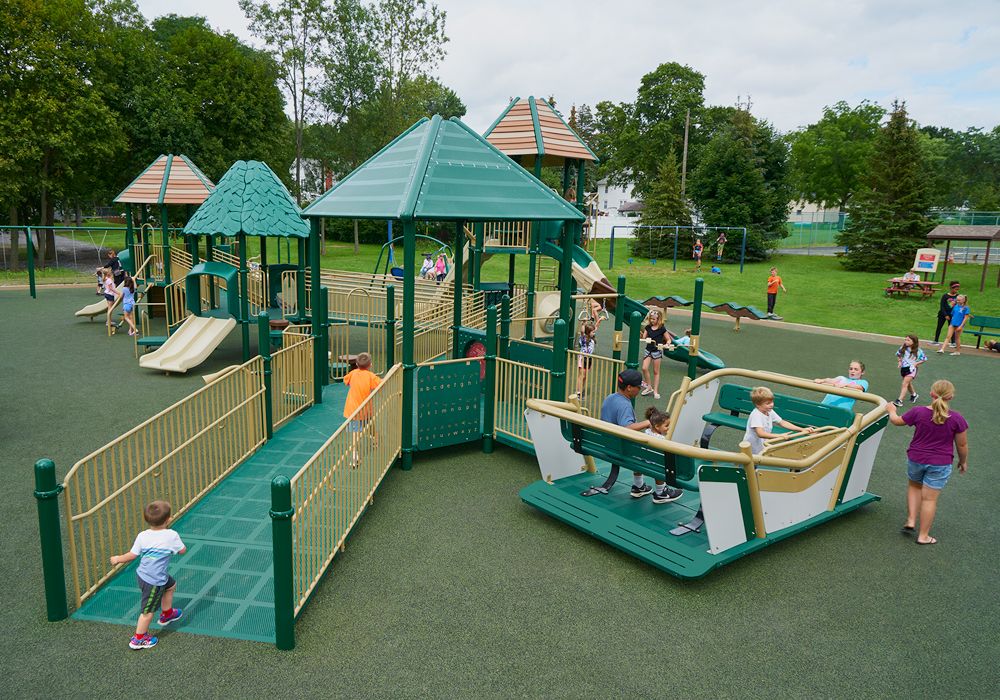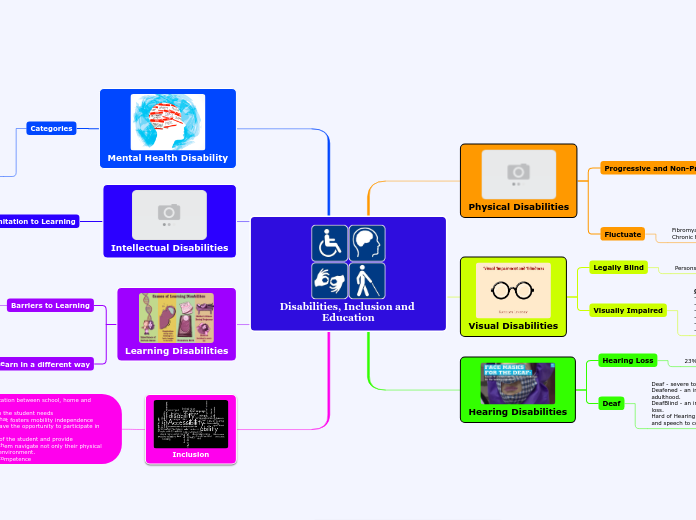
Disabilities, Inclusion and Education

Physical Disabilities
Progressive and Non-Progressive
Progressive
- Multiple Sclerosis
- neurological deterioration
- Muscular Dystrophy – muscular disorders
- Chronic Arthritis – inflammation of the joints
Non-Progressive
- Cerebral Palsy – neurological condition
- Spina Bifida – congenital malformation of the spinal cord
- Spinal Cord Injury – neurological damage resulting from trauma
- Absent limb
Fluctuate
Fibromyalgia – chronic pain condition
Chronic Fatigue Syndrome – chronic fatigue condition
Visual Disabilities
Legally Blind
Persons with 10% or less of normal vision
Visually Impaired
Common causes of vision loss include:
- Cataracts (cloudy vision – treatable)
- Diabetes (progressive blindness)
- Glaucoma (loss of peripheral vision)
- Macular Degeneration (blurred central vision)
- Retinal Detachment (loss of vision)
- Retinitis Pigmentosa (progressive blindness)a

Hearing Disabilities
Hearing Loss
23% of Canada's population experience hearing loss
Deaf
Deaf - severe to profound hearing loss.
Deafened - an individual who has acquired a hearing loss in adulthood.
DeafBlind - an individual who has both a sight and hearing loss.
Hard of Hearing - an individual who uses their residual hearing and speech to communicate.

Mental Health Disability
Categories
Schizophrenia – About 1% of Canadians.
Mood Disorders (Depression and Manic Depression) – About 10% of the population. Depression is the most common mood disorder.
Anxiety Disorders – About 12% of Canadians. They include phobias and panic disorder as well as obsessive-compulsive disorder.
Eating Disorders – Includes anorexia nervosa and bulimia and are most common in men and women under the age of 30.
Personality Disorders – There are many different personality disorders. People with these disorders usually have difficulty forming relationships with people. They are the most difficult disorders to treat.

Intellectual Disabilities
Permanent Limitation to Learning
- Any condition that impairs development of the brain before birth, during birth, or in childhood years
- Genetic conditions
- Illness affecting the mother during pregnancy
- Use of alcohol or drugs by pregnant mothers
- Childhood diseases
- Poverty — resulting in malnutrition, disease-producing conditions, inadequate medical care, and environmental health hazards.

Learning Disabilities
Barriers to Learning
- A learning disability is essentially a specific and persistent disorder of a person’s central nervous system affecting the learning process.
- This impacts a person’s ability to either interpret what they see and hear, or to link information from different parts of the brain.
- One of the most common indicators of a learning disability is a discrepancy between the individual’s potential (aptitudes and intellectual capacity) and his or her actual level of achievement.
Learn in a different way
- Having a learning disability does not mean a person is incapable of learning; rather that they learn in a different way.
- Many people with a learning disability develop strategies to compensate for or to circumvent their difficulties.
Inclusion
- Ensure open communication between school, home and community partners.
- Effective IEP tailored to the student needs
- Physical environment that fosters mobility independence
- Ensure that students have the opportunity to participate in social activities.
- Understand the needs of the student and provide accommodation to help them navigate not only their physical but also their academic environment.
- Respect the student's competence
